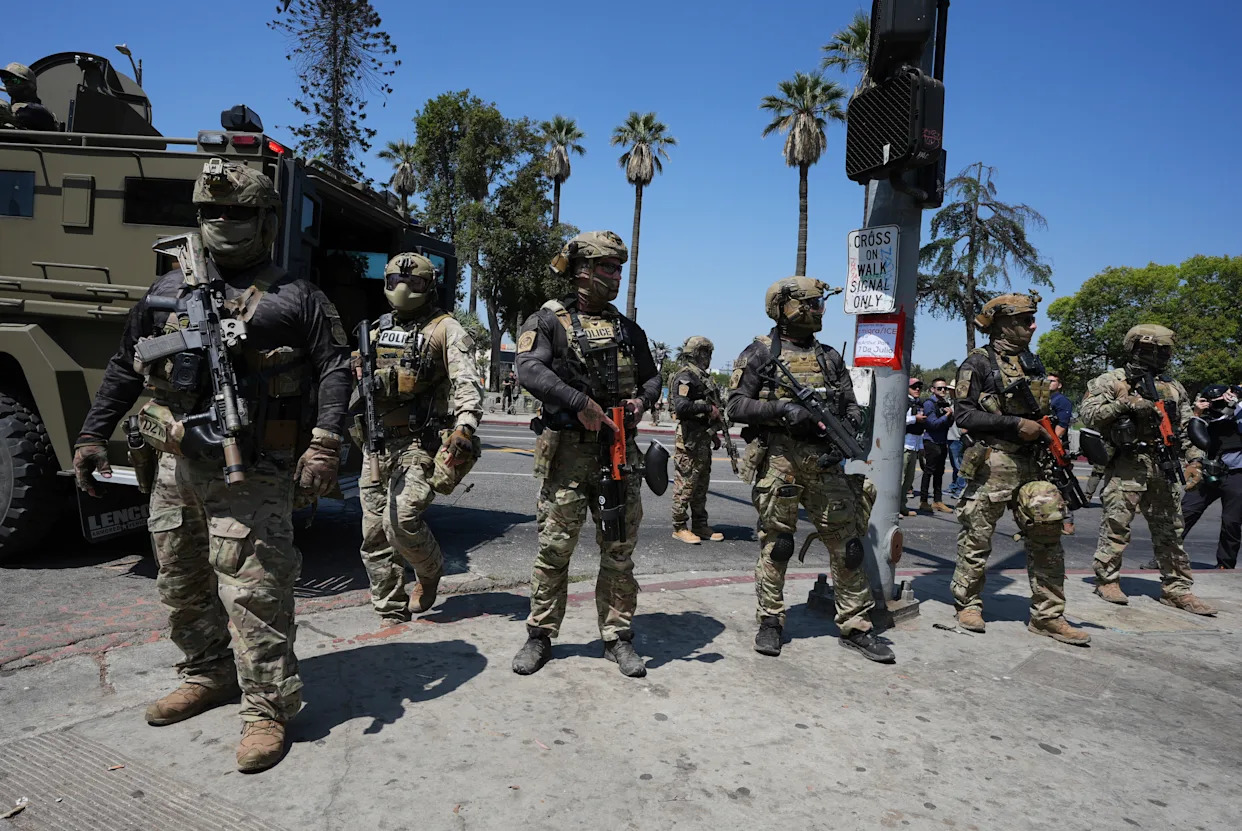
Stephen Miller was unequivocal: Immigration and Customs Enforcement officers would seek to arrest 3,000 or more immigrants per day, a staggering target that he said was necessary to carry out President Donald Trump’s mass deportation agenda.
“Under President Trump’s leadership, we are looking to set a goal of a minimum of 3,000 arrests for ICE every day and President Trump is going to keep pushing to get that number up higher each and every day,” the senior White House adviser told Fox News’ Sean Hannity in May.
But when federal judges pressed for details about that figure last week, the administration denied any such quota existed. The contradiction came in a lawsuit that alleged the intense pressure to rack up arrests had led ICE to conduct illegal sweeps in Los Angeles.
It’s not the only case that has featured the 3,000-arrest-per-day target as a crucial piece of evidence that the administration’s single-minded drive to rack up arrests may have prompted immigration authorities to cut corners or break the law. Washington-based Judge Jia Cobb, a Biden appointee, cited the figure when she ruled Friday that the administration’s dramatic expansion of “expedited” deportation proceedings violated the law. And Judge Trina Thompson, a Biden appointee in San Francisco, pointed to the purported goal Thursday when she blocked the administration’s bid to end temporary protected status for tens of thousands of Nicaraguan, Honduran and Nepali immigrants.
But on Friday, the Justice Department said no such orders had ever been given.
“DHS has confirmed that neither ICE leadership nor its field offices have been directed to meet any numerical quota or target for arrests, detentions, removals, field encounters, or any other operational activities that ICE or its components undertake in the course of enforcing federal immigration law,” a Justice Department attorney reported to the 9th Circuit Court of Appeals Wednesday.
While DOJ attorney Yaakov Roth attributed the quota claim to “anonymous reports in the newspapers,” he didn’t mention that Miller — Trump’s deputy chief of staff and homeland security adviser — had publicly confirmed the 3,000-daily-arrest “goal” in the televised interview on Fox.
The discrepancy is the latest example of a gulf between what White House advisers say in public and what the Justice Department says in court. In this instance, the chasm may be undermining the DOJ’s already strained credibility with judges.
Homeland Security officials did not respond to requests for comment. A White House spokesperson, Abigail Jackson, did not directly respond to questions about the discrepancy between Miller’s comments and the administration’s position in court.
“The Trump Administration is committed to carrying out the largest mass deportation operation in history by enforcing federal immigration law and removing the countless violent, criminal illegal aliens that Joe Biden let flood into American communities,” Jackson said.
A Justice Department spokesperson said there is no disconnect between the DOJ’s court filings and the White House’s public statements.
“The entire Trump Administration is united in fully enforcing our nation’s immigration laws and the DOJ continues to play an important role in vigorously defending the President’s deportation agenda in court,” the DOJ spokesperson said.
Immigration advocates have pointed to reports about the daily 3,000-arrest quota as proof that the administration’s most extreme tactics — ones they contend violate due process and other constitutional or legal principles — are the result of a single-minded drive to hit numerical targets. Judges have pointed to those reports as well, figuring them into the analysis of whether the administration’s tactics are legal.
The existence of the target has created particular complications in the case challenging the immigration sweeps in Los Angeles. The administration is fighting an order that a federal judge issued last month prohibiting ICE from conducting “roving” immigration arrests based on broad criteria such as presence at a home improvement store or car wash.
The claim of a quota featured prominently in oral arguments at the 9th Circuit last week on the administration’s bid to overturn that order. And when the 9th Circuit ruled Friday night, leaving the order largely intact, the judges seemed to highlight the contradiction by quoting the entirety of DOJ’s denial and then taking note of Miller’s statement to Fox about a “goal.”
The three Democratic-appointed judges assigned to the case said the vague factors ICE appeared to be relying on “impermissibly cast suspicion on large segments of the law-abiding population, including anyone in the District who appears Hispanic, speaks Spanish or English with an accent, wears work clothes, and stands near a carwash, in front of a Home Depot, or at a bus stop.”
During the arguments Monday, the appeals judges assigned to the case pressed the Justice Department for an answer on whether ICE officers were under pressure to meet some numerical target that might encourage them to detain people based on grounds that fall short of the “reasonable suspicion” the law required.
Roth conceded that such a quota, if it existed, could support claims that some arrests did not meet the legal standard. But he said it wouldn’t justify the proactive order that Judge Maame Ewusi-Mensah Frimpong imposed three weeks ago, barring “roving” arrests in the federal judicial district centered in Los Angeles.
“That might increase the risk of a constitutional violation in a particular case, but I don’t think that alone would be sufficient for an injunction,” Roth replied.
A lawyer fighting the immigration arrests, Mohammad Tajsar of the ACLU, told the appeals court in a filing Thursday that the government’s statements do not rule out the existence of some sort of quota motivating ICE officers.
“Defendants’ carefully worded letter does not negate an arrest quota,” Tajsar wrote. “Those actions can heavily influence agents’ and officers’ conduct.”





Comments